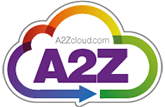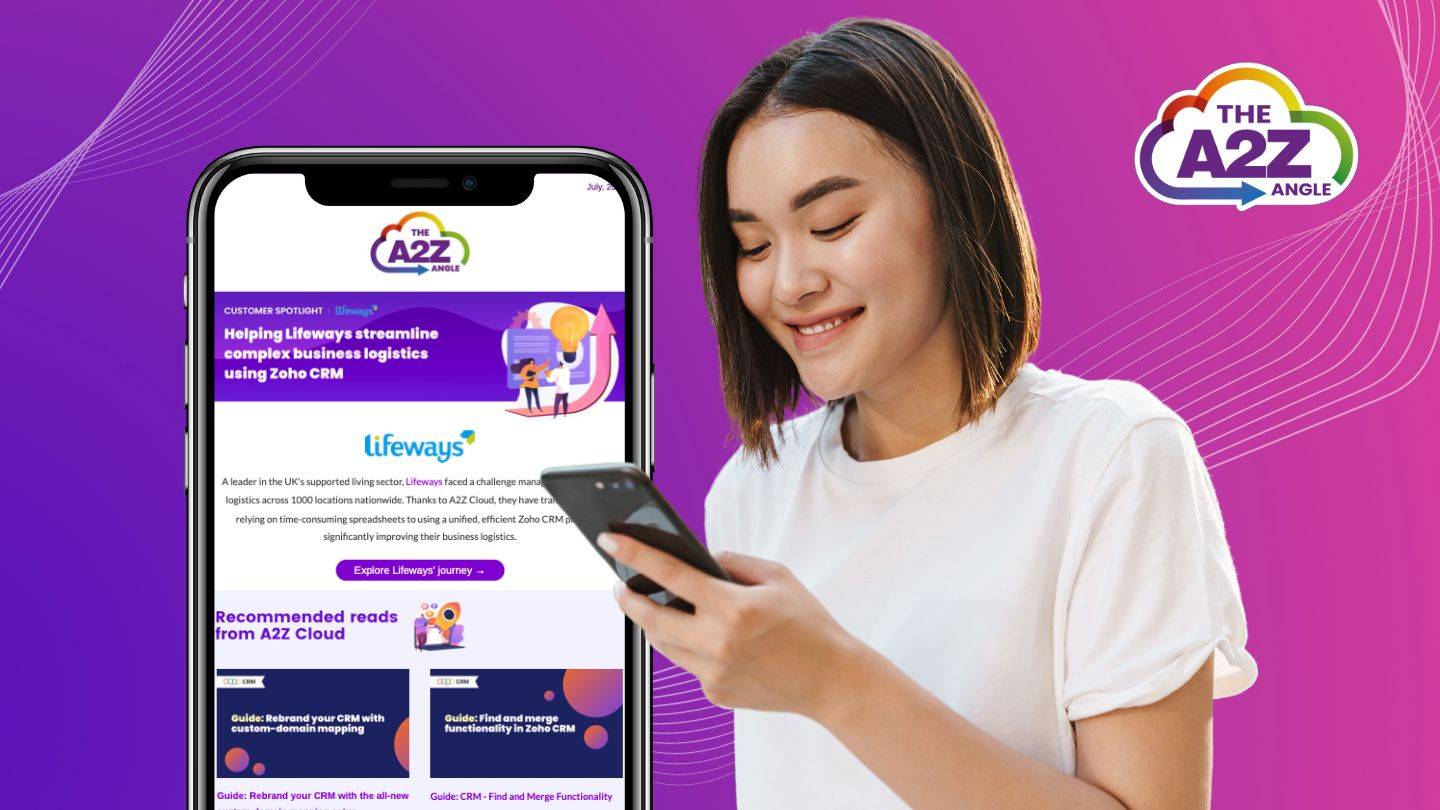Are your pay practices fair & unbiased? Can you prove it?
In this piece, A2Z Cloud explore the landscape of Diversity Pay Reporting (DPR), its implications, the reasons why it’s crucial for smaller businesses to engage, key features to seek in the perfect HR tool for DPR, and how your business tools can facilitate a successful journey towards implementing DPR effectively.
To give you an insider’s view, Helen Parker, HR Manager at A2Z Cloud, will share A2Z’s approach to DPR, and how our own pay system functions.
Are you confident that your pay practices are fair, not just between genders but across all diversity categories? It’s a question that makes business owners squirm in their seats.
The recent data from the UK paints a concerning picture. Despite a notable 7.2% hike in regular pay, as reported by the Office for National Statistics, only 51.8% of UK job adverts in October 2023 bothered to include salary details. This represents a near 20% drop from 2020, according to Adzuna!
So, what’s with the secrets on pay? Especially in sectors desperately seeking staff? The silence is loud… A recent WTW study shows that only 16% of UK companies are upfront about individual pay ranges, and 54% are yet to join the transparency bandwagon.
Let’s face it, who wants to end up like Disney? An eye-watering $150 million in underpaid female staff since 2015. It’s a stark reminder that not prioritising pay reporting can lead to trust issues, legal nightmares, and a brand image that’s taken a serious hit.
What’s the struggle? Why are businesses reluctant with their pay reporting efforts?
According to a 2018 EHRC report, 51% of employers find collecting ethnicity data a tough nut to crack, mainly because of its perceived intrusiveness and employee reluctance. So, what’s the struggle here? A lot of it boils down to concerns over privacy. Employees are wary about how their personal data may be used and this fear can often halt the whole data collection process in its tracks. That’s why clear communication is key. Companies need to show their teams exactly why this data is important and how it leads to fairer pay practices. It’s about building trust by ensuring everyone understands that their information is safe.
Then there’s the challenge of categorising ethnicity accurately. The UK’s rich cultural diversity means that fitting everyone into neat categories isn’t as easy as it sounds. This leads to reluctance: companies worry about either oversimplifying or complicating things too much. It’s a balancing act, trying to make sure everyone feels included without bogging down the process with too many categories.
The reluctance also stems from the complexity of intersectionality. It’s not only about gender or ethnicity; it’s about understanding how different aspects of someone’s identity come together to influence their workplace experience. Recognising this intersectionality is crucial, yet it adds another layer of complexity to pay reporting efforts.
Despite these challenges, a 2020 PwC survey indicated progress, showing more companies are stepping up, gathering the necessary data, and being more transparent about pay gaps. This shift shows a growing recognition that being flexible and committed to understanding these complexities is vital for effective Diversity Pay Reporting.
This emerging trend in larger corporations raises an interesting question: could this movement towards transparency and fairness in pay also become a vital focus for small and medium-sized businesses (SMBs)?
Not just for the big players – why SMBs need to step up
DPR matters to smaller companies as much as it does to the big names. It’s about creating a fair workplace where everyone gets their due – and that’s something every business, regardless of size, should strive for.
So, if you think Diversity Pay Reporting (DPR) is just for the corporate giants, think again. Here’s why:
Levelling the Playing Field: In the SMB world, every employee’s contribution is magnified. Ensuring fair pay across the board is crucial for maintaining morale and productivity.
Building Trust: The close-knit nature of teams means trust is everything. Transparent pay practices foster a culture of openness and respect.
Attracting Talent: In today’s job market, candidates are eyeing companies with fair and transparent practices. SMBs can stand out by championing DPR.
Legal and Ethical Responsibility: Small doesn’t mean exempt. Complying with pay equity laws and ethical standards is vital for businesses of all sizes.
Career Pathway Clarity: Ambitious staff are eager to understand their career trajectory. Clear and transparent pay structures provide them with a roadmap for what they need to achieve to advance to the next level.
A2Z Cloud’s approach to Diversity Pay Reporting
As businesses of all sizes increasingly recognise the importance of Diversity Pay Reporting (DPR), it’s insightful to see how this practice is being adopted and implemented within different organisational contexts.
In this case, we’re sharing our own approach at A2Z Cloud to demonstrate how companies, including SMBs similar to us, can integrate DPR into their operations.
Our approach is methodical and proactive. We regularly benchmark the ‘going rate’ for each role, categorising them into five levels, from Level 0 for school-leavers up to Level 5 for those leading large teams. The Senior Leadership Team (SLT) occupies a distinct category, reflecting their directorial responsibilities. Each employee is mapped to a role-specific pay grade, with clear criteria for progression to higher levels and salary brackets. These levels are reviewed during annual and mid-year appraisals.
Twice a year, we conduct company-wide salary reviews to align with industry standards. This structured framework fosters transparency and also ensures our pay practices are fair and competitive, reflecting our commitment to equality and inclusion in every aspect of our operations.
Helen Parker, HR Manager, says “For us at A2Z Cloud, DPR isn’t about uncovering pay gaps because we don’t discriminate. Instead, it’s about reinforcing our internal pay grades and levels, ensuring equitable pay across all business functions.”
A2Z’s CEO, Lucy Beck adds “Its so important, particularly with a largely young team, that people know how they can progress or what the impact is of moving from saying and internal role to a billable role will have on their salary so they can make informed choices. As we grow this will also allow us to show how subject matter expertise in a given industry or application area can impact your earning potential.”
Investing in the right HR tool for pay reporting
When it comes to implementing or improving your Diversity Pay Reporting, the choice of a HR Management tool can make a world of difference. You need a tool that can analyse, interpret, and present data in a way that informs your strategy and decision-making.
Key features to look for in a HR Tool for Pay Reporting:
Comprehensive Data Collection: The tool should be capable of collecting a wide range of data points – from basic demographic information to more nuanced details like job roles, performance metrics, and pay scales.
Analytics Capabilities: Look for a system that goes beyond basic reporting. Advanced analytics can provide deeper insights into trends, patterns, and correlations within your workforce data, enabling you to make more informed decisions.
Customisable Reporting: Every business is unique, and so are its reporting needs. A HR tool that allows for customisable reports means you can tailor your analysis to suit your specific DPR objectives.
User-Friendly Interface: A tool that’s complex to navigate can be a barrier. Opt for a system with an intuitive interface, making it easier for your HR team to utilise its full potential.
Integration with Other Systems: The ability to integrate with a variety of business systems such as recruitment platforms, payroll, and performance management tools, is essential for a smooth data flow across different aspects of HR. An integration with recruitment systems, in particular, offers valuable insights, helping to refine your recruitment and talent acquisition strategy.
Security and Compliance: With sensitive employee data in play, ensure the tool adheres to the highest standards of data security and complies with relevant data protection regulations.
Support for Strategic Decision Making: The right HR tool should not only provide data that support strategic decisions around recruitment, retention, and training, directly impacting your diversity and inclusion efforts.
Where Zoho People comes into play
After exploring the vital role of the right HR tool, it becomes clear why a solution like Zoho People stands out, particularly when integrated to a complete hire to retire strategy with Zoho Recruit.
At the heart of Zoho People is its Dashboard, offering a full overview of your workforce. This feature is pivotal in identifying trends and patterns that might be missed but are essential for informed decisions about pay equity and workforce diversity.
The real strength of Zoho People lies in its ability to transform raw data into tangible, actionable insights.
The Headcount Report, for instance, focuses on the growth and dynamics of your workforce. These insights are crucial for identifying hiring and retention trends, helping you gauge how your recruitment strategies are impacting diversity.
Another notable reporting feature is the Diversity Report, which helps you align your workforce with your diversity goals. This report is key in developing strategies to enhance diversity and inclusivity in your workplace.
Finally, the Experience-wise Exit Report is incredibly insightful for understanding employee turnover. It’s instrumental in pinpointing areas for improvement, especially in terms of retaining a diverse team.
If you’d like to give Zoho People a try yourself, you can sign up to a free account here.
In summary, Zoho People exceeds the usual expectations of HR management tools, arming businesses with the insights needed to critically evaluate and improve their diversity pay reporting and practices, making it an indispensable tool for companies committed to fostering a fair, inclusive, and diverse workplace.
Wrapping up
So, whether you’re just starting on this path or looking to improve your existing practices, remember that embracing the right strategies and tools will position you as a forward-thinking, fair, and equitable employer in today’s competitive landscape.
As Helen Parker insightfully notes, “For A2Z Cloud, it’s leading the way where there is no formal legislation – yet.”
Share this article
Simplify HR processes. Champion your workforce.

Join the A2Z Angle
Looking to stay ahead of the curve in the fast-paced world of tech? Look no further than A2Z Cloud's monthly newsletter. Join us today for exclusive access to deep dives on all the techie subjects you crave, with must read content from our top partners, plus exciting event announcements and inspiring customer stories.
It's all delivered straight to your inbox, once a month only, so you never miss a beat. Sign up below.



















